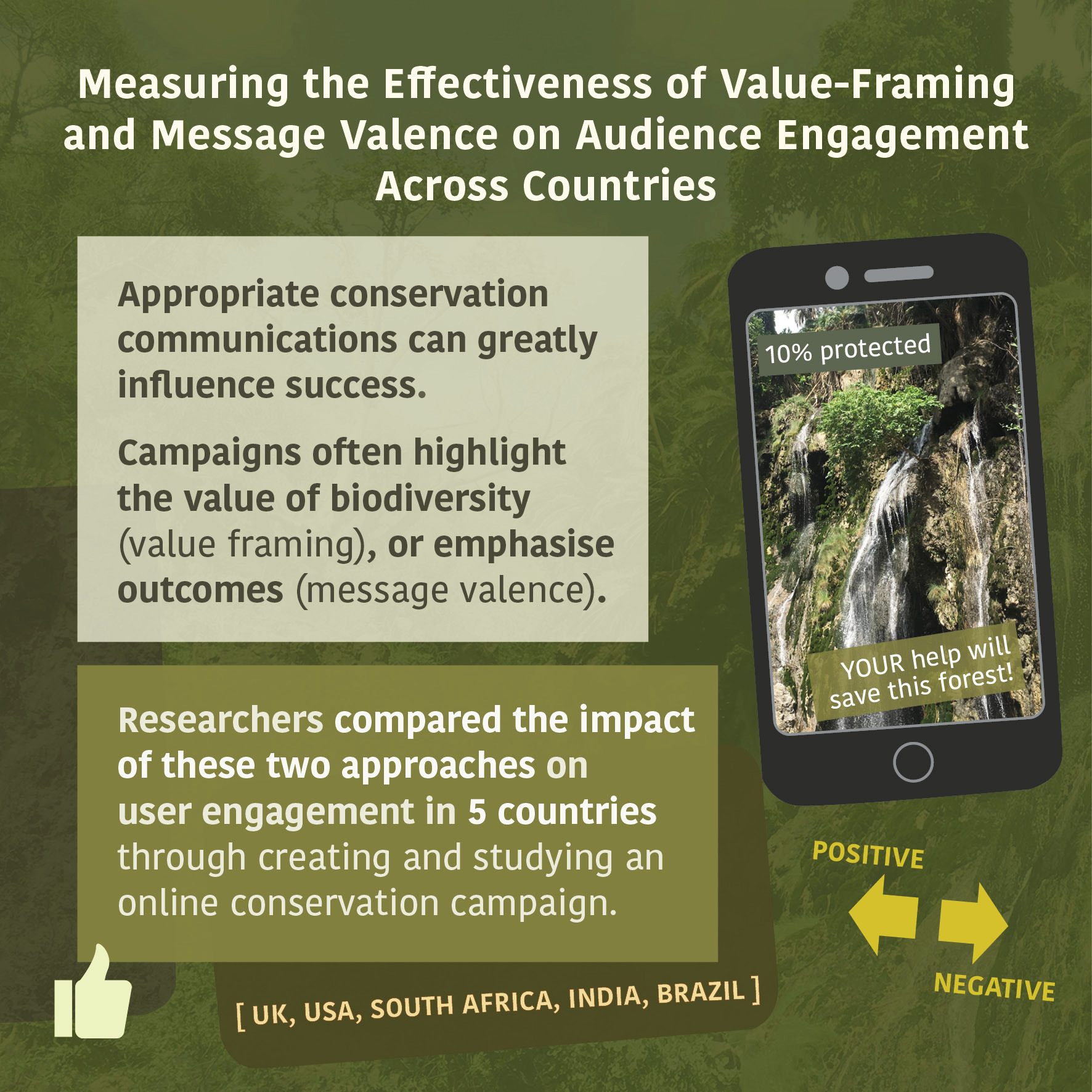News
Measuring the Effectiveness of Value-Framing and Message Valence on Audience Engagement
Environmental problems are largely caused by human actions thus, changing public behaviour is an essential step for successful conservation. To motivate public engagement, conservationists may frame messages in different ways with differing emphasis. Two main approaches are to use ‘value-framing’ – where the extrinsic or intrinsic value of biodiversity is emphasised, and ‘message valence’ – where positive or negative outcomes are highlighted.
To date, little work has been done to evaluate the impact of different approaches in motivating pro-environmental behaviours. This new study led by WildCRU DPhil student Katie Blake with Diogo Verissimo and Takahiro Kubo set out to explore this topic and provide robust evidence on the use of framing for conservation communications.
Following an initial assessment of framing styles used by environmental non-governmental organisations on social media, the authors created an online fundraising campaign as a basis for their research into user engagement. Run across the UK, USA, South Africa, India and Brazil the campaign yielded significant differences in overall engagement levels between countries. Interestingly, users did not show any substantial preference for types of value-framing or message valence when clicking on the advertisements.
The large disparities in engagement rates between countries highlight the need for targeted, locally relevant campaigns. The authors also looked at other features of message design which may influence campaign success, such as providing concrete information regarding fundraising outcomes, as well as activating social norms.
Blake, K., Kubo, T., & Veríssimo, D. Measuring the effectiveness of value-framing and message valence on audience engagement across countries. Global Environmental Psychology. https://doi.org/10.5964/gep.11181







